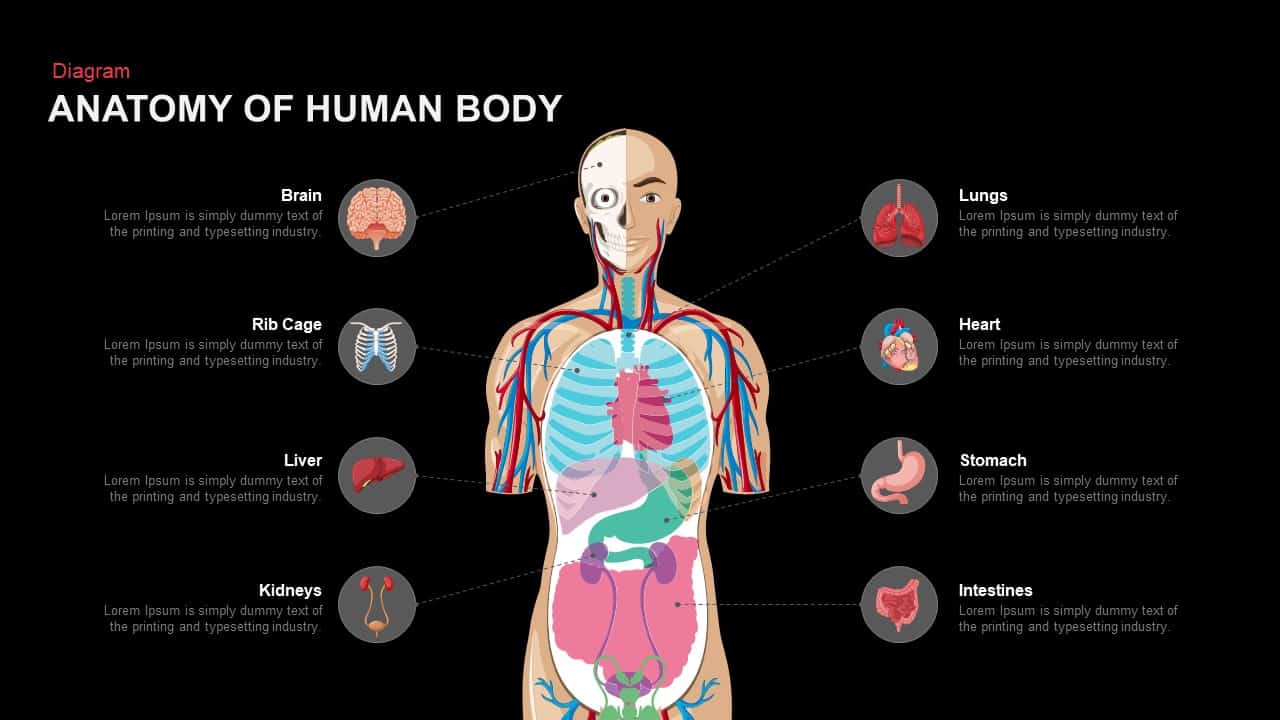Anatomy Of Human Body PowerPoint and Keynote template

Leverage this detailed anatomy-of-the-human-body diagram slide to illustrate major organ systems and structural components with precision. This fully editable PowerPoint & Google Slides asset features a frontal human silhouette rendered in half-skin, half-skeletal view, overlaid with vibrant, color-coded organ shapes and crisp line icons for Brain, Rib Cage, Liver, Kidneys, Lungs, Heart, Stomach, and Intestines. Eight circular callouts encircle the central figure—four on each side—connected via dashed leader lines to text placeholders that let you annotate each organ’s functions, statistics, or clinical notes. The minimalist white backdrop and muted grayscale silhouette ensure maximum focus on organ graphics, while warm reds and cool blues differentiate systems intuitively. Subtle drop shadows and consistent line weights deliver a polished, modern aesthetic that enhances readability and engagement across devices.
Built on master slides with vector-based shapes and editable fonts, this diagram supports seamless brand alignment and rapid updates. Instantly swap out icons to represent custom categories, adjust callout positions or connector styles, and apply your organization’s color palette in seconds without disrupting slide alignment or resolution. High-contrast typography and clear placeholders make content legible on any display, from large screens to printed posters. The design’s responsive layout accommodates animation sequences—such as sequential callout reveals or color fades—empowering you to guide audiences through step-by-step walkthroughs in both live presentations and self-paced e-learning modules.
Fully optimized for collaborative editing in PowerPoint and Google Slides, this anatomy template streamlines version control and team reviews. Duplicate callout groups or hide branches to adjust focus, or layer metric overlays next to each organ for research data. The versatile design ensures professional, consistent visuals across medical training sessions, patient education, and clinical briefings.
Who is it for
Medical educators, healthcare professionals, anatomy students, and clinical trainers will find this diagram indispensable for teaching organ functions and spatial relationships. Biomedical researchers, hospital administrators, and pharmaceutical consultants can also leverage the layout for presentations on physiology or clinical processes.
Login to download this file

















































